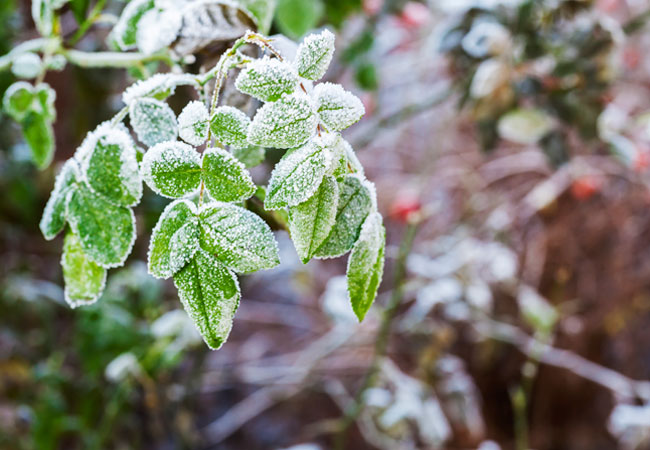

We may earn revenue from the products available on this page and participate in affiliate programs. Learn More ›
Unexpected early fall and late spring frosts—periods when outside temperatures go below freezing (32 degrees Fahrenheit) often catch home gardeners off-guard, nipping tender fruit buds, cutting short vegetable harvests, and killing houseplants that were left outdoors.
Learning how to protect plants from frost isn’t a complex undertaking—but it does require keeping an eye on the weather forecast and being ready to act at a moment’s notice. When a plant experiences frost damage, leaves may appear wet and limp due to ice forming within the cells, interrupting the natural flow of water throughout the plant. Tender annuals usually die from frost exposure, and while trees and shrubs can survive, they’ll lose any buds or mature fruit. Protecting plants from frost will extend their growing season.
Local weather forecasts can tip you off to frosts, but you shouldn’t depend on them entirely. Pay attention to clues like the state of the sky, keeping in mind that temperatures are more likely to dip dangerously on clear nights that lack insulating cloud cover. But why wait till the last minute to swoop in and save your plants? The best way to prevent frost damage is to gather and implement strategies before a cold front. Just follow this guide for how to protect plants from frost—you and your garden will be glad you did!
RELATED: The 20 Best Winter Plants for Year-Round Curb Appeal
Know Your Local Frost Dates
The easiest way to protect plants from frost is to plan ahead! Mother Nature can be fickle, but outdoor gardeners should know the average first and last frost dates for their region. Search the Farmer’s Almanac by ZIP code to find out the dates relative to where you live. Remember that the first and last frost dates are averages based on previously recorded frost dates—the actual frost dates will very likely vary by the year and current weather patterns.
Plant for Your Climate
When creating a perennial landscape, home gardeners should select plant species that will survive in the local climate. The interactive USDA Plant Hardiness Zone Map allows growers to see the climate zone where they live in order to select plants wisely.
If the intent is to grow semi-tropical plants outdoors during the warm summer months and then pull them inside before the weather cools, the hardiness map is less critical. But, before planting any flower, bush, or tree in the yard, determine first if the plant will grow well in your zone. When ordering new plants online or purchasing them from a garden center, check the plant’s recommended growing zones before purchasing.
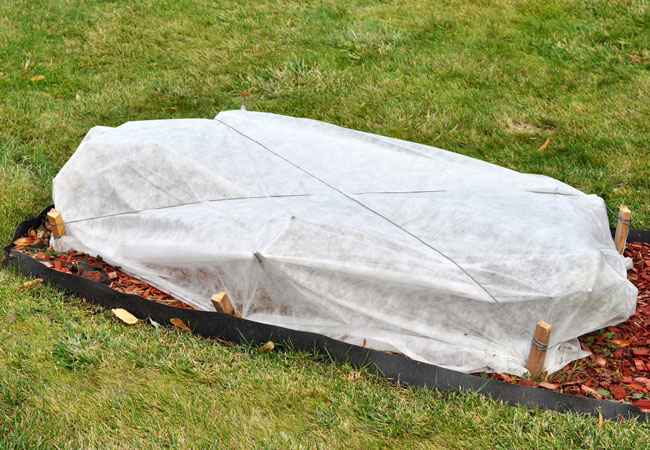
Frost or Light Freeze: What’s the Difference?
To protect plants from frost, it’s imperative to understand the difference between an actual frost and a light freeze. A light freeze occurs when the temperature drops below 32 degrees Fahrenheit. Frost, on the other hand, is a visible coating of fine ice crystals that form on plants, cars, the lawn, and other outdoor objects, but the two are not the same.
Frost can develop at any temperature below 40 degrees Fahrenheit if moisture is abundant in the air.
Listen to a local evening weather report or check an online weather site, such as Weather Underground, to find the dew point—meaning the temperature at which a cloud will form. If the dew point is over 45 degrees Fahrenheit, it’s unlikely to frost overnight if the predicted overnight low temperature is 36 degrees Fahrenheit or above. However, if either the dew point or the predicted low are below that, err on the side of caution and protect frost-sensitive plants.
Plants That Are Most Sensitive to Frost Damage
Some plants are tolerant of light frosts and freezing temperatures, but the following plants are all susceptible to frost. They should be protected if you suspect frost could form or if the temperatures are predicted to dip below freezing. Surprisingly, some frost-sensitive plants can withstand a short period (up to 1 or 2 hours) of freezing temps as long as frost does not form.
- Tomatoes are frost-sensitive plants; 28 degrees Fahrenheit is the lowest temperature they can tolerate.
- Eggplant is a frost-sensitive plant; 31 degrees Fahrenheit is the lowest temperature it can tolerate.
- Beans are frost-sensitive plants; 32 degrees Fahrenheit is the lowest temperature they can tolerate.
- Corn is a frost-sensitive plant; 32 degrees Fahrenheit is the lowest temperature it can tolerate.
- Rhododendron is a frost-sensitive plant; its flowers and foliage will only tolerate temperatures above 34 degrees Fahrenheit, but it will come back next year.
- Elephant ears are frost-sensitive plants, but some varieties can die if the temp dips below 50 degrees Fahrenheit.
- Petunias are frost-sensitive plants; 32 degrees Fahrenheit is the lowest temperature they can tolerate.
- Pumpkins are frost-sensitive plants; 31 degrees Fahrenheit is the lowest temperature they can tolerate.
- Begonias are frost-sensitive plants; 32 degrees Fahrenheit is the lowest temperature they can tolerate.
- Sweet potato vine is a frost-sensitive plant; damage may occur at temperatures at or below 45 degrees Fahrenheit.
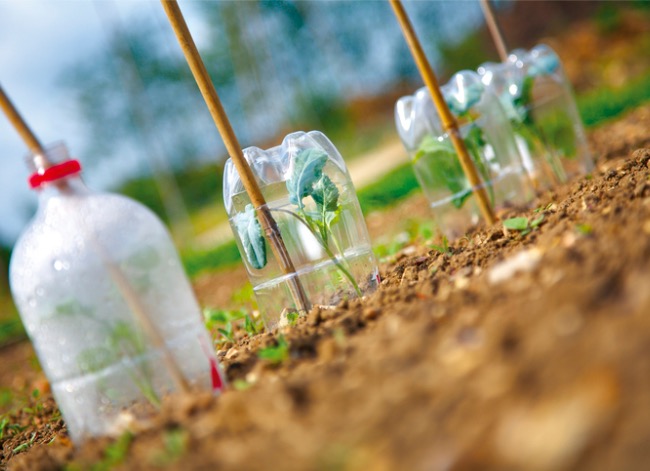
Protecting Plants From Frost
Protecting tender plants from frost is a temporary solution in the fall since frost-sensitive plants will almost certainly perish when the temperatures plunge lower than 28 degrees, which is known as a “hard frost” or a “killing frost.” Protecting plants before this happens, usually by covering them, keeping the soil moist, or even adding a bit of heat and plant frost protection, can prolong a harvest and keep blooms on the plants longer.
It’s a Wrap
Figuring out how to cover plants for frost can be as simple as wrapping them up. Wrapping the entire branch system of small trees or shrubs with horticultural frost cloth, burlap, plastic sheeting, or even old bedsheets will keep the temperature underneath a crucial few degrees warmer than outside. Use twine or clothespins to hold the material in place.
Two flat bedsheets sewn on three sides will provide a large covering for a small fruit tree or an ornamental tree, such as a dwarf or semi-dwarf peach or cherry tree of approximately 12 to 15 feet. Place the covering lightly over the tree, covering the branches, and secure the excess around the trunk with twine. For smaller frost-susceptible species like tomato or pepper plants, set a stool or a patio chair over them, and then drape it with a sheet.
When an extra-cold night (below 30 degrees Fahrenheit) is in the forecast, tuck an outdoor light bulb in an approved outdoor fixture under a large wrap to produce additional heat. Position the bulb where it is sheltered from rain and cannot contact either the wrap or the branches to prevent the risk of fire. As a further safety measure, use an exterior extension cord with an inline ground fault circuit interrupter (GFCI). A 40-watt incandescent bulb will often generate sufficient heat under the wrap to protect a small tree, but skip the LEDs—they don’t produce heat.
Remove plant covers the following morning as soon as temps rise above freezing so that plants can receive direct sunlight and air circulation. Keep the materials handy in case you need them again.
RELATED: 7 Types of Plant Covers All Home Gardeners Should Know
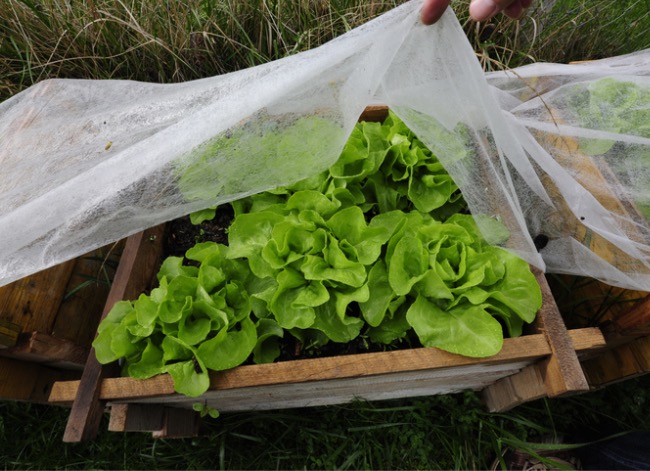
Cover Seedlings
You can purchase glass or plastic domes, called “cloches,” such as these Coobbar Garden Cloches to shelter vulnerable seedlings in early spring—or DIY cloches by cutting the tops off opaque plastic milk jugs. Other spur-of-the-moment plant frost covers include inverted buckets and flowerpots. Place cloches over young vines and veggies (such as tomatoes and peppers) in the spring to protect them from late frosts.
If the temperatures are expected to hover around the freezing mark, cover long rows of seedlings lightly with loose straw or mulch to help the soil retain heat a bit longer. This will only work for light frosts. However, if temps fall below 32 degrees Fahrenheit for longer than a few hours, place cloches over the rows.
Penny-pincher tip: If you’re planning on starting a large garden, save milk jugs throughout the winter to use as cloches in the spring.
RELATED: 10 Fall Flowers That Are Hardy in Cold Weather
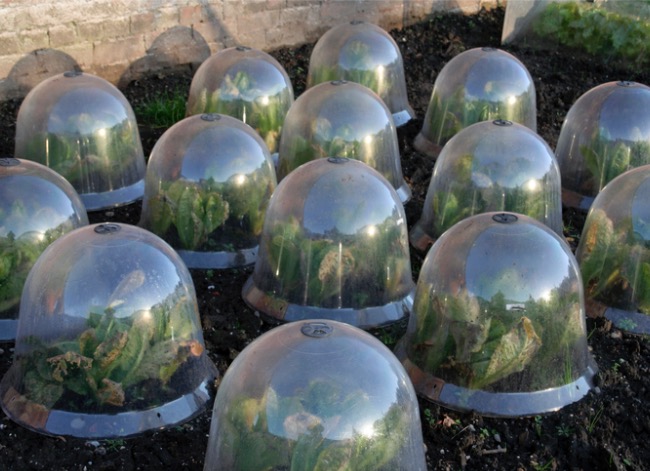
Water for Warmth
Well-watered plants are stronger and more likely to withstand exposure to a touch of light frost. Water retains heat and has an insulating effect on plant cells. A thirsty plant is more likely to succumb to light frost because its cells are already stressed. So saturate vegetable and annual flower beds early in the day if frosty temps are in the forecast. That will give plants plenty of time to absorb the water before the temperatures drop.
For additional protection, fill plastic jugs with warm water and set them beside plants. At night, cover both plants and jugs with fabric or sheeting. During the day, the water in the jugs will warm up. They will radiate the retained heat to the air beneath the cover at night to keep plants warmer.
Take ’em Inside
The surest way of protecting plants in winter is to bring them indoors. In warm weather, keeping popular tropical houseplants such as jasmine, philodendron, and schefflera outdoors in protected areas like covered patios allows them to bask in light and air. Alas, just one early frost can kill them, so don’t risk leaving them out too long! To prepare plants for their winter indoors, water early in the day and lightly spray the foliage with water to remove any garden pests that have taken up residence. Then let plants dry until the evening before moving them inside.
RELATED: Solved! 8 Flowers Sure to Bloom in Winter
Dig Up the Bulbs
As an element of good gardening practices, tender bulbs and tubers, such as calla lilies, elephant ears, and gladiolas, should be dug up before freezing temperatures arrive and stored in a cool, dry place (around 50 to 60 degrees Fahrenheit). A basement makes a good storage spot. Dig cautiously, taking care not to damage the bulbs with the shovel or trowel. Rinse bulbs and tubers with water to remove stuck-on soil, and then let them dry completely before layering them in a ventilated box filled with clean straw or peat moss.
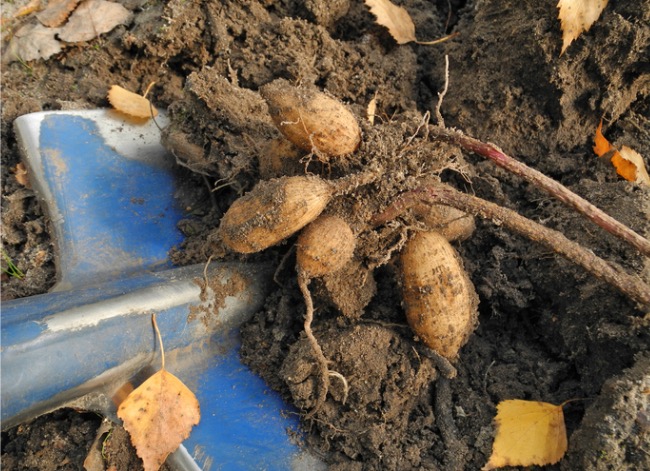
Try a Special Spray
Anti-transpirant foliage sprays, such as Bonide’s Wilt Stop Plant Protector, help guard ornamental plants from light frost. Use them on plants such as rhododendrons, azaleas, and laurels to protect flowers and foliage. These sprays impart a light coating of polymer film to the leaves and will protect them for up to a month by sealing in moisture. However, if the temps dip below 30 degrees Fahrenheit for more than a few hours, or if the spray does not adequately cover the leaves, they may still suffer frost damage.
Final Thoughts
The two times of year tender plants are susceptible to frosts are during the spring when a late frost threatens to kill newly planted seedlings and in the fall, when an early frost can cut short a vegetable harvest. Newbie gardeners and those just wanting to protect tender plants and develop good gardening skills will likely have some questions.
FAQs About Protecting Plants in Winter
Protecting tender plants from plunging winter temperatures will help ensure
Q. What can I cover my plants with to prevent frost?
Fabric, lightweight blankets, plastic sheeting, and cloches will all help keep frost from forming on a tender plant.
Q. What temperature is too cold for plants?
This varies by the specific plant, but in general, 32 degrees Fahrenheit will damage most frost-sensitive plants. Frost can form at higher temps, however, when the dew point drops below 45 degrees Fahrenheit.
Q. Will watering plants prevent frost damage?
It can help. Not only does watering a plant keep it healthy and robust so it’s more likely to resist a light frost, but the water in the soil can also act as a type of insulation. When combined with plant coverings, it can keep the temperature inside the covering higher.
Q. How do you keep potted plants from freezing?
Tender or sub-tropical potted plants should be brought indoors if there’s a chance of frost or freezing. If you have a cold frame, you can also place plants there if a light frost or freeze is in the forecast.
Q. How do I protect new plants from spring frost?
An unexpected late-spring frost is every gardener’s worry. Use cloches and try wrapping methods when learning how to cover plants from frost. If the temps are expected to dip below freezing, consider adding a light bulb under the covering to keep the plants warm.
